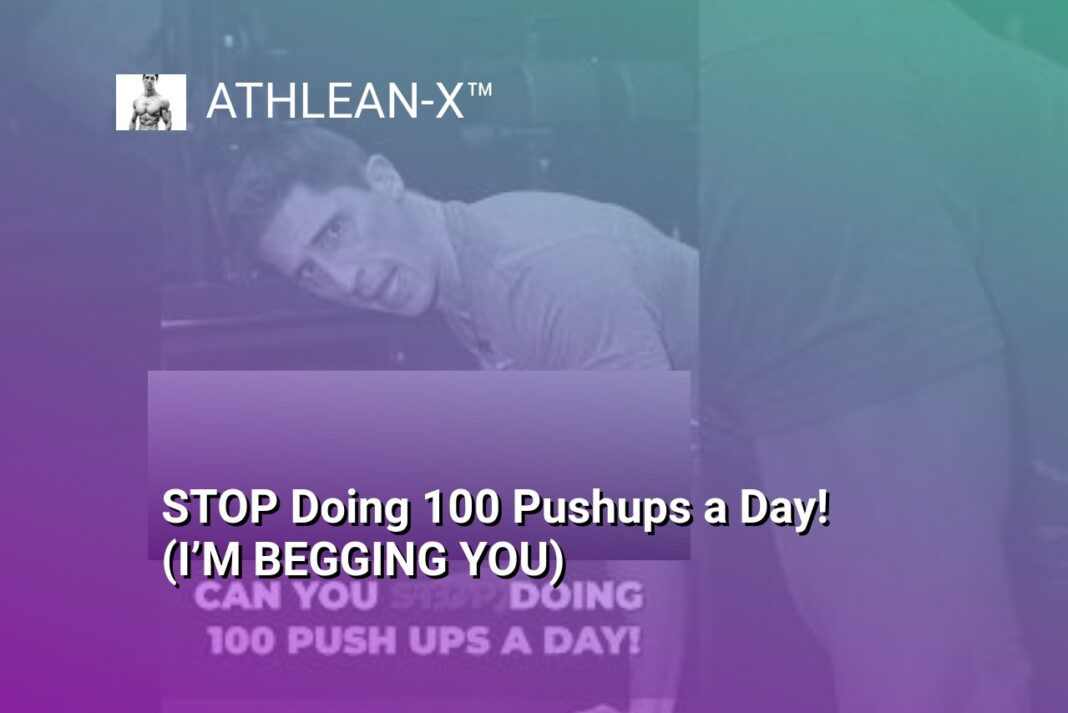The Bottom Line:
- The text discusses a game called “Can you spot the technique mistake” with three levels: easy, medium, and impossible. The main theme is identifying and correcting common mistakes in weightlifting exercises to improve muscle stimulation and activation.
- In the easy level, the mistake is not controlling the negative portion of the exercise, which can lead to better back stimulation if the weight is resisted on the way up.
- In the medium level, the mistake is not going deep enough in the exercise, and the recommendation is to let the dumbbells sink lower until a deep stretch is felt in the pecs.
- In the impossible level, the mistake is that the cable for the evasion cable curls is set up too low, and bringing the cable up closer to hand height will create more tension on the biceps in the stretch position.
- The overall goal is to help the reader identify and correct common technique mistakes in weightlifting exercises to maximize muscle stimulation and activation.
Easy Level: Controlling the Negative
Mastering the Negative Phase: The Key to Unlocking Muscle Growth
In the easy level of this fitness game, the focus is on the often-overlooked negative phase of an exercise. Many individuals make the mistake of simply letting the weight “free fall” on the eccentric (lowering) portion of a movement, missing out on a crucial opportunity to stimulate muscle growth.
The negative phase, or the controlled lowering of the weight, is just as important as the concentric (lifting) phase. By resisting the weight on the way down, you can create greater muscle tension and activation, leading to enhanced muscle fiber recruitment and ultimately, more significant strength and size gains.
Harnessing the Power of Controlled Lowering
When you let the weight drop freely on the negative portion of an exercise, you’re missing out on the chance to challenge your muscles further. By slowing down the eccentric phase and maintaining control, you’re forcing your muscles to work harder to resist the weight. This increased time under tension can stimulate more muscle growth and lead to better overall results.
Think of it this way: if you were to simply let a weight drop to the floor, you wouldn’t feel the same level of muscle engagement as when you slowly lower it back down. By taking the time to control the negative, you’re creating a more challenging environment for your muscles, which can lead to greater adaptations and improvements in strength and muscle development.
Applying the Principle to Your Workouts
Incorporating controlled negatives into your fitness routine is a simple yet effective way to take your results to the next level. Whether you’re performing compound exercises like pull-ups or isolation movements like bicep curls, focus on slowing down the eccentric phase and resisting the weight on the way down. This small adjustment can make a significant difference in the overall effectiveness of your workouts and help you achieve your fitness goals more efficiently.
Remember, the key to mastering the negative phase is to maintain control and focus on the muscle contraction throughout the entire range of motion. By doing so, you’ll not only improve your technique but also unlock new levels of muscle growth and strength development.
Medium Level: Achieving Proper Depth
Achieving Proper Depth
Proper depth is crucial for effective muscle activation and targeting the desired muscle groups. In the medium-level challenge, the mistake lies in not allowing the dumbbells to sink low enough during the exercise. It’s important to overcome the fear of letting the weights descend further and embrace the deep stretch in the pectoral muscles.
One key aspect to consider is the range of motion. Many individuals tend to cut the movement short, limiting the depth and preventing the muscles from fully contracting and stretching. By allowing the dumbbells to sink lower, you’ll create a deeper stretch in the pectoral region, which can lead to greater muscle fiber recruitment and a more comprehensive workout.
Additionally, the depth of the movement can impact the biomechanics and the overall effectiveness of the exercise. When the dumbbells are not lowered enough, the tension on the target muscles may be reduced, diminishing the stimulation and potential for growth. Embracing a deeper range of motion can help ensure that the pectoral muscles are fully engaged throughout the entire movement.
Overcoming Limitations and Exploring the Limits
It’s important to recognize that the fear of lowering the weights too far can be a common mental barrier. Many individuals may be hesitant to push their limits, fearing that they might lose control or compromise their form. However, it’s crucial to overcome these limitations and explore the full potential of the exercise.
By gradually increasing the depth of the movement, you can challenge your body and push past your comfort zone. This process of progressive overload can lead to greater muscle development and improved overall fitness. Remember, it’s essential to maintain proper form and control throughout the exercise to ensure safety and maximize the benefits.
Focusing on Technique and Muscle Awareness
In addition to achieving proper depth, it’s vital to focus on maintaining excellent technique and developing a strong mind-muscle connection. Pay close attention to the movement pattern, ensuring that the dumbbells are lowered in a controlled manner and that the pectoral muscles are the primary drivers of the movement.
Cultivating a heightened awareness of the target muscles can also enhance the effectiveness of the exercise. By focusing on the sensations and contractions in the pectoral region, you can better activate and engage the desired muscle groups, leading to more efficient and productive workouts.
Remember, the medium-level challenge is all about pushing your limits, exploring the full range of motion, and refining your technique to achieve maximum results. By embracing the deep stretch and maintaining proper form, you can unlock the true potential of this exercise and take your fitness to the next level.
Impossible Level: Optimizing Cable Curl Tension
Optimizing Cable Curl Tension
The “impossible level” of this fitness game challenges you to identify the technique mistake in a cable curl exercise. While the overall form may appear good, there is one key element that can be optimized to enhance the effectiveness of the movement.
The key to unlocking the full potential of the cable curl lies in the positioning of the cable itself. Many individuals set the cable at a lower height, which can limit the tension and stretch experienced by the biceps during the exercise. By bringing the cable up closer to hand height, you can create a more advantageous angle and increase the tension on the biceps, particularly in the stretched position.
Maximizing Biceps Activation
When the cable is set at a lower height, the angle of the cable pull can cause the biceps to work less efficiently. By raising the cable to a higher position, closer to hand level, you create a more direct line of pull, which translates to greater biceps activation throughout the range of motion.
This subtle adjustment in cable positioning can make a significant difference in the overall effectiveness of the cable curl. By increasing the tension and stretch on the biceps, you can stimulate greater muscle fiber recruitment, leading to enhanced muscle growth and strength development.
Maintaining Proper Form
It’s important to note that while the cable positioning is the key focus in this “impossible level” challenge, maintaining proper form throughout the exercise is also crucial. Ensuring a controlled, smooth movement pattern, with a focus on the eccentric (lowering) phase, can further amplify the benefits of the cable curl and help prevent injury.
By identifying and addressing the cable positioning as the technique mistake in this challenging fitness game, you can unlock a new level of biceps development and take your cable curl performance to new heights.





